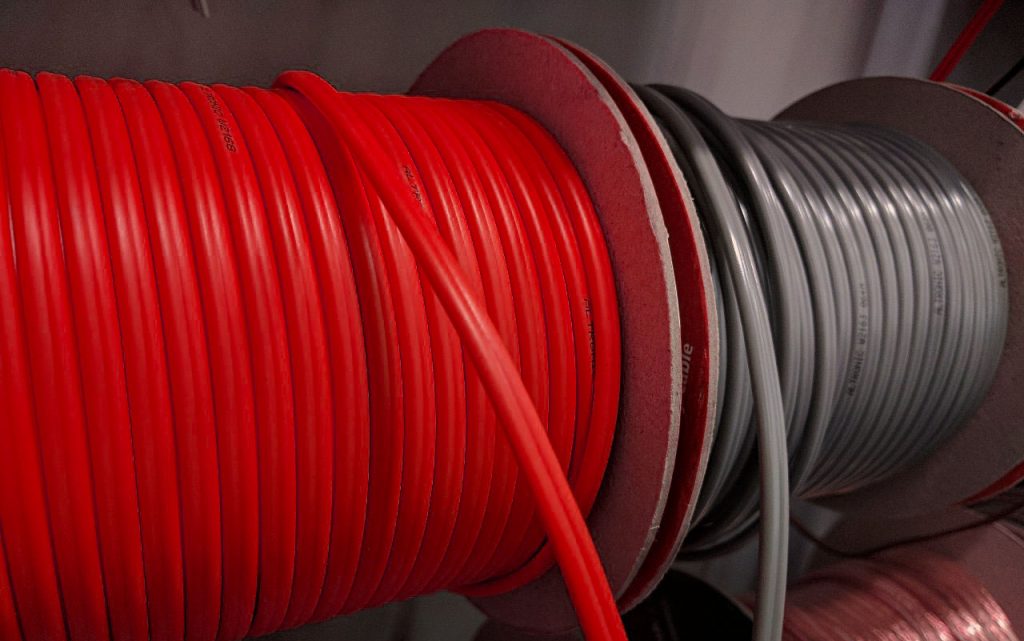
A 100V line speaker system is tremendously flexible when you consider the distances over which speaker signals can be transported. Each speaker circuit is capable of being run over huge distances, but it is still important to consider cable losses. With all electrical connections the loss of power increases as the length of the cable increases. This in turn increases the load impedance on the amplifier.
As a result it is important to choose the correct cable for your 100V line speakers to suit the distances involved in your installation. Bear in mind that in a large warehouse, car park etc, it might be feasible for a single circuit to be run well over 1000m.
The following table provides an overview for maximum speaker line lengths for a given conductor size.
| 0.75mm² | 1.0mm² | 1.5mm² | 2.5mm² | 4.0mm² | 6.0mm² | |
| 30 Watt | 800m | 1066m | 1600m | 2666m | 4266m | 6400m |
| 60 Watt | 400m | 533m | 800m | 1333m | 2133m | 3200m |
| 120 Watt | 200m | 266m | 400m | 666m | 1066m | 1600m |
| 240 Watt | 100m | 133m | 200m | 333m | 533m | 800m |
*Note these are estimates only.
Although virtually any figure 8 two core cable will be suitable for a 100V line system, industry practice (and notably a requirement of fire & evacuation regulation) is to use double insulated cabling. The extra sheath provides additional protection for the conductors. The most commonly used variety is 24/0.20 or 18AWG cable, this provides the most economical solution for most installations. It is typically available in a range of colours to help installers identify speaker circuits, which can be especially useful for systems which have all wiring terminating in a single rack.
Other factors
There are other considerations which may effect cable distance calculations.
Temperature plays an important role in voltage drop. It’s possible that in outdoor installations or the impedance of a speaker circuit could change by up to 10% depending on the ambient temperature. Always factor in a degree of tolerance in your system design to allow for this.
Another important factor is cable quality. Not all cabling is the same construction. In recent years we have found the proliferation of cheap copper coated aluminium cables to be a significant factor causing problems in longer distance installations. It’s important to note that this type of cable is not permitted for use in approved fire & evacuation installations, where the standard stipulates solid copper conductors be used.
Reducing interference
Like any copper cabling, 100V speaker lines can be subject to interference from outside sources. Where possible, ensure cables are not run next to mains, comms or telephone cabling.
Overall, the largest single factor at play when wiring 100V line speakers is distance. If your installation is running many speakers over a large distance as is common in large buildings, warehouses, pedstrian precincts etc. then ensure your system design caters for voltage drop with a 10-20% tolerance to account for other factors.
The best way to calculate cable suitability is to obtain the full specification for the cable from your supplier including the cable conductor size and specific copper resistance. You will then be armed with all the required information to make the right decision for cabling your 100V line speaker system .





